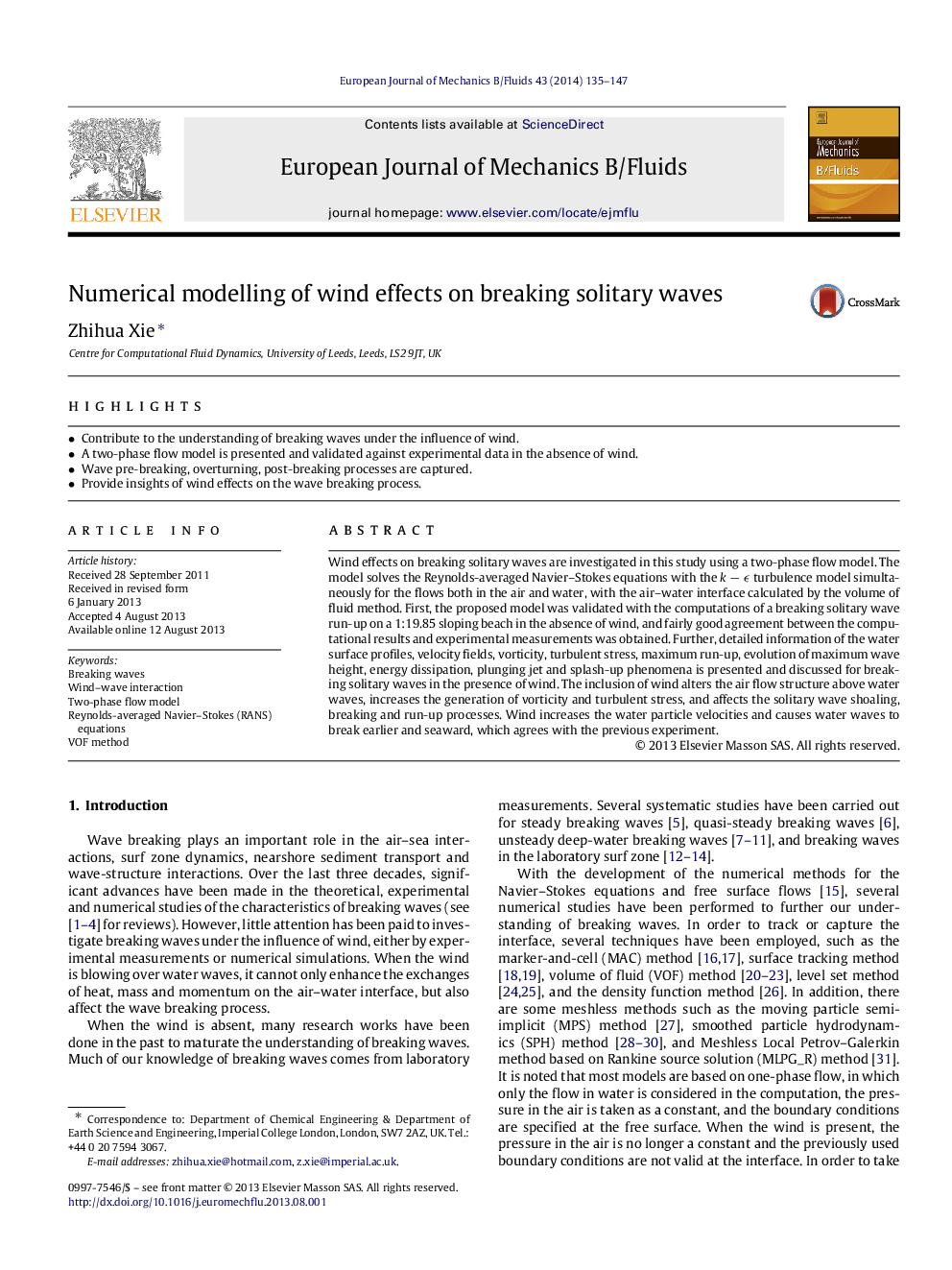| کد مقاله | کد نشریه | سال انتشار | مقاله انگلیسی | نسخه تمام متن |
|---|---|---|---|---|
| 650419 | 1457283 | 2014 | 13 صفحه PDF | دانلود رایگان |
• Contribute to the understanding of breaking waves under the influence of wind.
• A two-phase flow model is presented and validated against experimental data in the absence of wind.
• Wave pre-breaking, overturning, post-breaking processes are captured.
• Provide insights of wind effects on the wave breaking process.
Wind effects on breaking solitary waves are investigated in this study using a two-phase flow model. The model solves the Reynolds-averaged Navier–Stokes equations with the k−ϵk−ϵ turbulence model simultaneously for the flows both in the air and water, with the air–water interface calculated by the volume of fluid method. First, the proposed model was validated with the computations of a breaking solitary wave run-up on a 1:19.85 sloping beach in the absence of wind, and fairly good agreement between the computational results and experimental measurements was obtained. Further, detailed information of the water surface profiles, velocity fields, vorticity, turbulent stress, maximum run-up, evolution of maximum wave height, energy dissipation, plunging jet and splash-up phenomena is presented and discussed for breaking solitary waves in the presence of wind. The inclusion of wind alters the air flow structure above water waves, increases the generation of vorticity and turbulent stress, and affects the solitary wave shoaling, breaking and run-up processes. Wind increases the water particle velocities and causes water waves to break earlier and seaward, which agrees with the previous experiment.
Journal: European Journal of Mechanics - B/Fluids - Volume 43, January–February 2014, Pages 135–147
